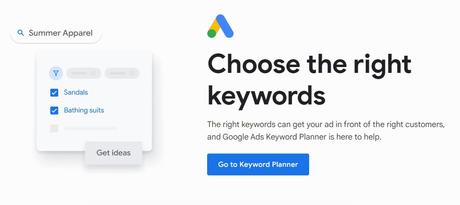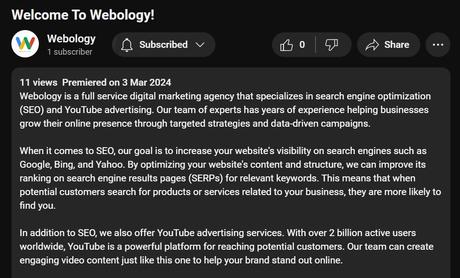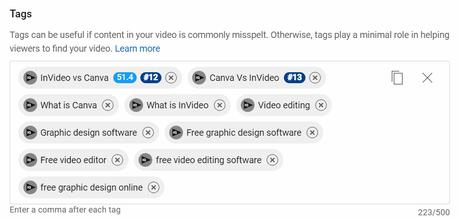Link-building in SEO typically involves text-based content.
However, it doesn’t have to be the only type of content you can use to build backlinks. Videos can have a similar impact.
In fact, it can be easier and more effective to stand out and build quality links with engaging video content.
In this guide, we’ll talk about video submissions in SEO, a relatively less-talked-about topic in the link-building arena.
Video submissions not only help you build quality backlinks but can also boost your conversion rate. Here at Webology we use video in both on and off-page strategy. It helps us get better client results by leveraging the same piece of content for multiple SEO tactics.
What is Video Submission in SEO: Everything You Should Know

Let’s quickly discuss the basics of video submissions in SEO.
Video Submission Definition
Video submission in SEO is the process of creating and sharing videos on several video hosting platforms, such as:
- Vimeo
- YouTube
- Dailymotion
- Twitch
- Wistia
From an SEO perspective, the main goal of video submission is to get high-quality, relevant backlinks to your site.
Videos that are optimized with SEO best practices perform better in search engines. An important aspect of video optimization is adding target keywords in the title, description, and tags to let search algorithms know what the video is about. You can also include a link to your website in the video description for potential viewers to easily visit your site.
Benefits of Video Submission for SEO

There are several benefits of using videos in your SEO workflows. Here are a few prominent ones.
Increased Visibility on Search Engines
When optimized with the right keywords, videos are a form of content that ranks on search engines like Google and YouTube. Sometimes videos will get featured prominently in both platforms for similar keywords.
As a result, you can get better reach and visibility for your message because next to Google, YouTube is the 2nd largest search engine by daily usage.
Better Engagement Rates
Videos tend to be engaging in nature, especially compared to text-based content.
And, engagement is an important video ranking factor in the YouTube discovery algorithm. Likewise, thanks to the recent Google leak we now know that time spent on a page is also important for your website’s ranking in search engines. You can add your video content easily in a modern CMS like WordPress so that your website visitors have more interactive media to keep them interested.
Enhanced User Experience
Videos help webmasters improve user experience on their web pages.
A better user experience almost always leads to better search engine rankings.
Backlink Opportunities
Video submissions help you build authoritative backlinks to your website.
For instance, your website’s link in a YouTube video description is very powerful because it is coming from a platform Alphabet (Google’s parent company) controls.

Video Submission for SEO: Step-by-Step

Here’s how a typical video submission process works and how you can go about improving your SEO with it.
Find In-Demand Topics
Of course, one of the first things you should be doing is creating high-quality content.
But, before that, find a topic your target audience is interested in.
Any good keyword research tool will give you a good idea of a keyword’s monthly search volume.
Google Keyword Planner is a great free option to get you started.

While the tool is ideal for finding PPC keywords, it can tell you a lot about which topics are popular in your industry. You might also do some competitor research by reviewing the content on channels you want to compete with on YouTube. Create similar topics for your channel and cover them thoroughly.
Create High-Quality Videos
The obvious next step in the video submission process is creating a video that resonates with your target audience.
This means following video marketing best practices such as:
- Creating engaging and helpful content
- Using optimized lighting and a clear voice-over
- Incorporating a clear call to action at the end
Types of videos you can submit on video platforms include:
Face videos: Where you talk into the camera.
Faceless videos: You can use stock footage and images with a voice-over.
Screenshot videos: These videos typically have your voice-over with a screen recording (E.g., software tutorials, step-by-step guides, etc.).
Product feature videos: These videos highlight the specific features and benefits of your product or service.
Testimonial videos: Featuring satisfied customers providing testimonials about your brand.
Explainer videos: Using animation or motion graphics to explain a concept or process.
Optimize Your Videos for SEO
The visibility of your videos depends a lot on this step.
Once you have a high-quality video on a trending topic, it’s time to optimize it with SEO best practices.
Title and Thumbnail
Creating a title that helps your video’s reach and generates clicks is tricky.
Make sure to use your main keyword in the title naturally and use actionable words to generate clicks. Emoji icons can also be beneficial when used sparingly.
Description
The description is where you can provide all the important information about your video, helping search engines understand it better.
Every video hosting platform has a maximum character limit. For instance, you can write a YouTube video description up to 5000 characters in length. That may seem like a lot, but it’s important to use this space wisely. Include your main keyword and relevant keywords throughout the description, but make sure it is still readable and engaging for viewers.

Note that new YouTube channels need to be verified before you can add clickable links to their video descriptions.
Pro tip: Use an actionable CTA near the end of your video to get viewers to click on your link. Place the link you mention as close to the top of your description as possible so it does not get hidden from view.
Video Tags
Search engines can’t read the content within a video. The bots need to crawl other information to understand what your video is about and that’s where tags come into play.
Tags are important in helping search engines rank your content for the right queries or keywords.

To maximize your video’s reach, you can add all semantically related keywords as tags. And don’t forget those common spelling mistakes! For instance, everyone always tries to call me Blake Ayers instead of Blake Akers. I quit caring a log time ago and usually don’t correct people, but it’s a tag I might consider in this case based on how often it happens in the real world 🤣
Choose the Right Platforms for Submission
There’s no shortage of quality video hosting platforms and many of them will give you a juicy DoFollow link to any page of your choosing.
For maximum impact, you want to share your website anywhere possible.
YouTube, for instance, boasts an active monthly audience of over 2 billion.
Plus, it’s a high authority platform, allowing you to build powerful backlinks.
In addition to YouTube, there are several other platforms you can use to get video backlinks on, such as Vimeo and Dailymotion.
While choosing a video submission platform, remember the goal. You want to promote your brand while also getting powerful links.
Promote Your Videos

People love video content regardless of the platform it’s shared on.
As a website owner, you don’t have to stick to video hosting platforms.
Cross-promote your videos to get maximum SEO benefit out of this popular content type. You can reach out to sites in your niche and offer that they share your video in their related content. If your video is related to a product launch, you might even consider embedding it within a press release announcing the product. That’s a strategy I use to get our clients tons of links on news websites in a very short amount of time. Here’s a few more great ideas for you to get the word out:
Social Media: Leverage social media’s massive reach by hitting the share button every time you create a new video.
Influencer Collaboration: Work with influencers to boost your videos’ reach and impact.
Email Marketing: If you have an email marketing list, let them know every time you’ve created a new video.
How Powerful Are Video Submission Links?
Compared to the amount of effort required, I think this is still a very effective link building strategy. But let’s be real…you won’t rank for a competitive term only using links like this. The most powerful backlinks at the moment are contextual links from authoritative pages with high-quality traffic. Think of video submission links as a foundational strategy. They allow you to diversify anchor text, IP addresses and so much more.
What is Video Submission in SEO: Blake’s Final Take

When it comes to generating engagement, videos are undoubtedly the most powerful type of content.
But, they have a lesser-known yet powerful SEO application: Backlinks!
Video submission refers to sharing your video on a platform of your choice with a link back to your site.
In addition to providing you with a backlink, video submission has multiple secondary benefits, including:
- Increased search engine visibility and traffic
- Brand visibility
- Boosted conversions
So, text-based content isn’t the only content type that can generate backlinks for your website.
If you do it right, video submissions can be even more effective.
Moreover, the added benefits of video marketing make this strategy a no-brainer for any brand looking to boost organic reach online.
